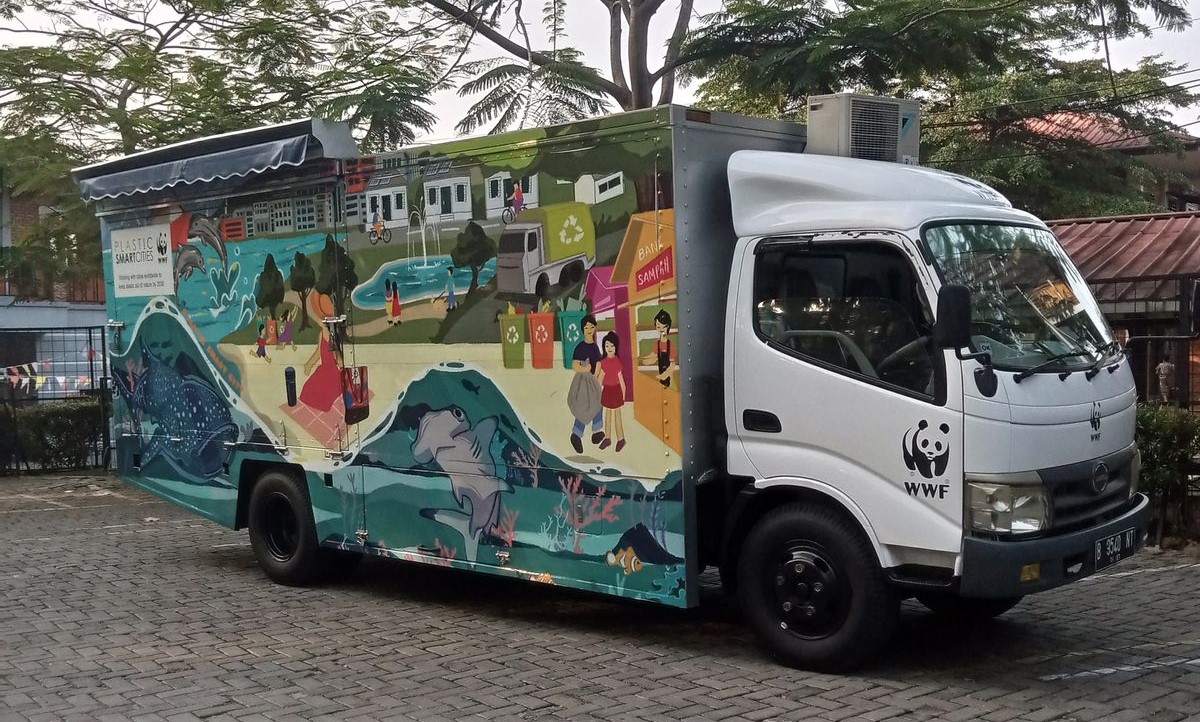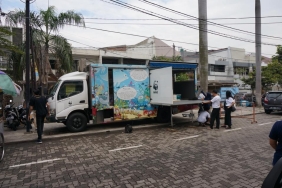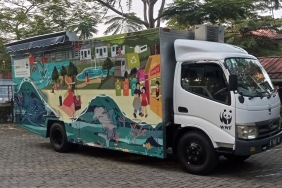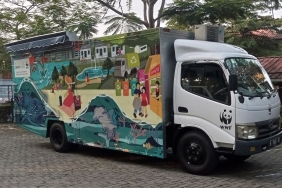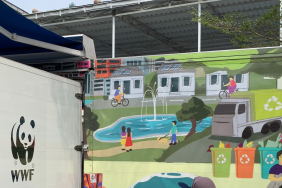GETTING TO KNOW THE CITARUM RIVER WITH THE WWF-INDONESIA MOBILE PANDA
By: Adrian Pramana (Volunteer Panda Mobile) & Natalia Trita Agnika
WWF-Indonesia's Panda Mobile visited Bandung again. This time, Panda Mobile came to attend an invitation from Equal Bright School, Bandung. The visit took place on Monday (22/01) with the theme "Biodiversity and Water". The students were divided into two large groups, namely a group of grade 1-5 elementary school students and a group of grade 6 elementary school students.
After dancing together to warm up the atmosphere, the grade 1-5 students were introduced to biodiversity in Indonesia through the introduction of six umbrella animals that are the focus of WWF-Indonesia's conservation efforts. They were also invited to protect Indonesia's biodiversity in the easiest ways, such as saving water, saving paper, tissue, and 3R (reduce, reuse, recycle).
They were then invited to watch movies about animals and the environment, including "Tiger Hunter" and "We Are All Connected". The students were very enthusiastic about the movie "We Are All Connected" because they could see that animals and humans are similar and connected in their activities, such as expression, diet, and others.
No less interesting activities were also carried out by 6th grade students. They were invited to learn about water and the Citarum River. Sani Firmansyah, WWF-Indonesia's Supporter Center Officer started the activity with an introduction about WWF-Indonesia and its conservation programs. He then explained about water and the Citarum River. Previously, the students had been given an assignment by their teachers to collect materials on the current condition of the Citarum River.
They used the session with Panda Mobile to deepen their knowledge about the Citarum River, one of which was through a short film entitled "Citarum Bestari". In the movie, the students got an overview of the damage in the Citarum Watershed that has polluted the water quality.
After that, they tested the microbial content in water using a microscope. The water samples used were mineral water, tea water, and sewer water. When tested one by one, the water samples showed striking differences. This can be seen from the diverse activities and forms of microbes, especially in sewer water.
"This educational activity helps us in terms of learning and adding insight and is very useful for students in their efforts to start loving and preserving their environment," said Fedora, a teacher at Equal Bright School Bandung.

